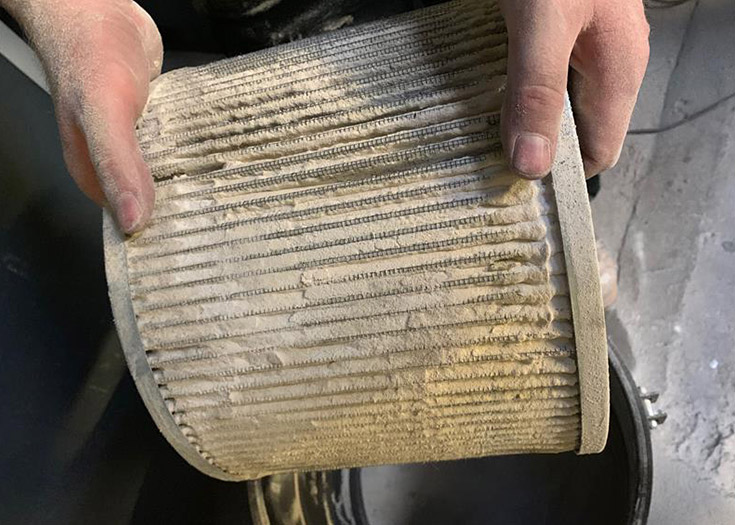
When Should You Change Your Filter Elements?
This is, without a doubt, the most frequently asked question in the world of filtration regardless of the filter type a customer uses or what the application is. We will address this question and variables that need to be considered.
Maintenance of a filter can often be overlooked. How often do you change the filter in your household vacuum cleaner? When it stops working, right? When you apply this approach to business, unforeseen consequences such as process downtime, added maintenance costs, and increased stress levels can occur.
The performance of air moving equipment is often critical to a production process and simply halting production to change a filter during a shift is easier said than done.
How does unplanned maintenance impact your business? Here are three questions to consider:
- Which departments and what other processes are impacted when the equipment is out of use?
- Is the replacement filter element on hand and what additional resources are necessary to perform an urgent filter change? (Personnel, lifts, tools, etc.)
- What impact does an unplanned shutdown have on morale and employee productivity?
To avoid production disruptions, it is important to have a maintenance plan in place to minimize the chances of any unscheduled downtime.
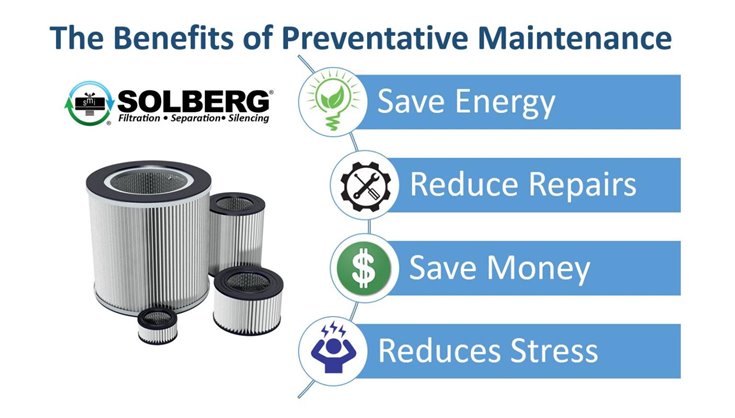
Selecting the Correct Filter
Selecting the best filter style and media for the job is important. In the world of filtration, media selection has the greatest impact on equipment performance, equipment protection levels, and filter element longevity. Standard media such as paper or polyester typically offer 99+% efficiencies at the 1-to-5-micron range. Media with even higher efficiency such as HEPA or ULPA, will typically offer 99.97% efficiencies in the 0.1 to 0.3-micron range. Selecting the right filter media and properly sizing the filter for the application will help maintain consistent performance. Proper filtration selection enables preventative maintenance intervals that keep core business processes up and running longer.
Each application is different and therefore filtration requirements will differ as well. Knowing the challenge to the filter is crucial, while particle size and volume of contaminant will dictate how quickly a filter needs to be replaced. Because there are so many application variables, the lifespan of the filter elements can vary greatly by application. For example, a heavy-duty dry particulate application may require filter element changes monthly or even more frequently. Cleaner applications may only need a bi-annual filter element change.
For wet applications, where liquid knock-out and particulate removal is required, knowing the mixture of compounds and quantity of liquid present in the process is key. For example, in high humidity applications where trace amounts of water condensation develop in the system piping, a synthetic filter media such as polyester will withstand the environment and offer better performance than paper filter media. In harsher applications, where solvents or corrosive liquids are present, chemical resistant media such as polypropylene may be required. For Oil Mist Elimination (OME) applications, the type of oil in use and air stream temperature will influence the selection of the best solution. These filters use a combination of specialty fiberglass media and synthetic layers to capture fine oil mist aerosols and coalesce the fine mist into larger droplets so that the captured oil can be drained.
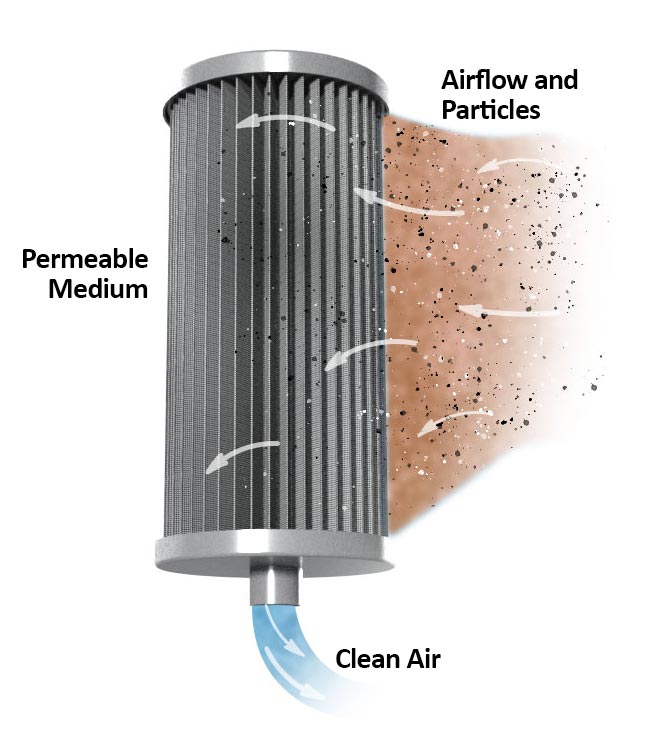
The basic concept of permeable media filtration. Implemenmting an effective filtration solution begins with selecting the appropriate filter media.
These general examples demonstrate just how diverse applications and the corresponding filtration solutions can be. However, one thing is common among them: eventually a replacement filter element is needed. How long a filter will last depends on the application characteristics, the type of media, and the amount of effective surface area within the filter element. Therefore, sizing and selection based on application specifics is important.
For more information sizing and selecting the right filter, read How Do I Select and Properly Size an Inlet Filter?
What are the indicators that a filter element needs to be changed?
Visual Inspection Indication
Visual inspection can help assess the condition of the filter element. When a filter is subject to harsh conditions, degradation of the media or other visual defects can occur. Unless there is significant visible damage, this method is highly subjective and provides very little consistency across maintenance personnel.
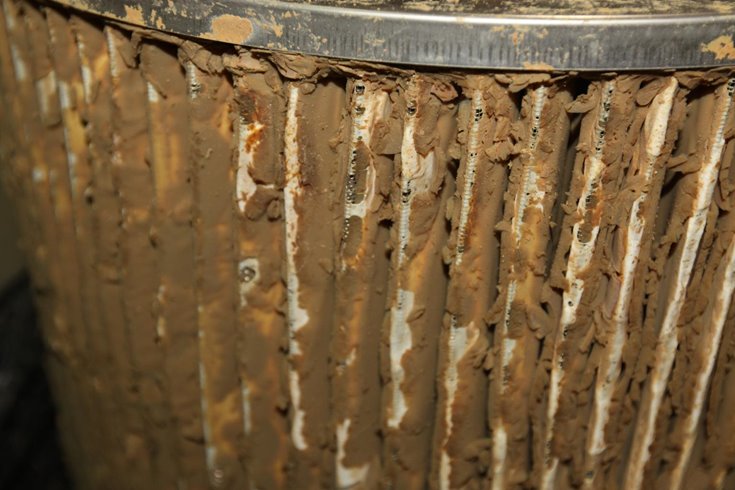
Filter media damaged from pyrophoric reaction. The heat from the reaction casued the captured material to smolder leaving large holes in the filter media.
Time-based Indication
A simple approach to changing a filter is to follow a specified maintenance interval based on experience with the process and the equipment. For example, if the equipment oil must be changed every 2000, 4000, or 8000 hours, schedule the replacement filter change at the same time. This method assumes that the filter is not clogging and degrading equipment performance during the specified time frame
Differential Pressure Indication
Pressure differential is widely used as a forward indicator that it is time to change a filter element. This is probably the best and most accurate method of assessing the remaining life of a filter element assuming there are no tears or holes in the filter media. As a filter becomes loaded or saturated with contaminant, the restriction of air flow will increase. As a result, the pressure drop across the filter will also increase. By measuring the clean pressure drop (ΔP) across a filter at installation, you can closely monitor the differential pressure. Simple gauges or Pressure Drop Indicators (PDI) can be used in combination with a filter so that a change out point can be determined. The filter changeout differential is recommended at 37-50 mbar over the initial ΔP.
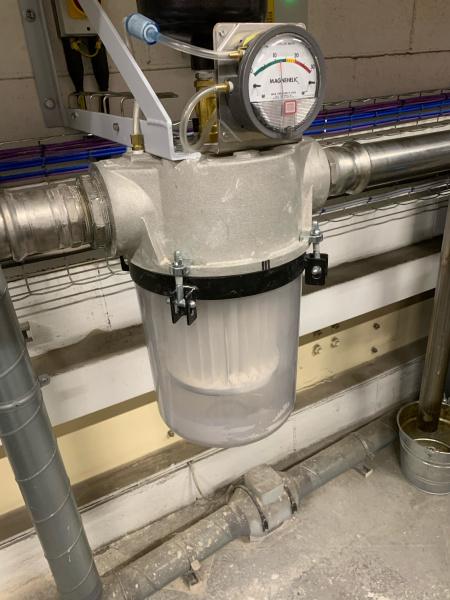
A differential pressure gage installed on a Vacuum Filter to monitor pressure drop across the filter element.
Declining Equipment Performance Indication
Filtration by its nature will place a restriction on the air flow to your machinery. A well-sized filter will minimize this restriction at start up. As the filter element becomes dirty and begins to clog with contaminants, the air-moving equipment must work harder to overcome the increased restriction of air flow caused by the clogged media. If a filter is not changed or maintained, the required system performance may become more difficult to achieve, and the process may need to shut down. The result can be additional energy usage, as your equipment works harder to counteract the restriction. A well-sized and maintained filter will not just protect the equipment, but also contribute to reduced energy usage.
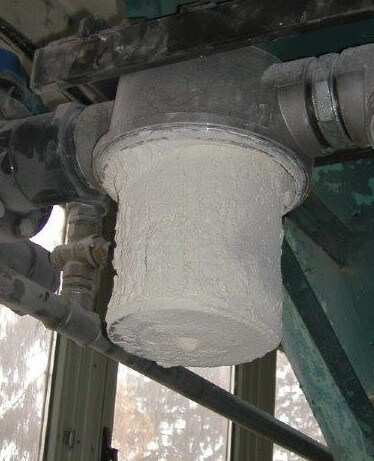
Filter Element covered in particulate restricting air flow to the vaccuum pump.
Contaminated Process Indication
If your process outputs are contaminated, this may be another indication that it is time to change your filter. Scrapping finished or in process goods can be costly. If an inlet filter to a blower has failed in a plastics pneumatic conveying application, atmospheric dust and debris can end up in the plastic being conveyed. Think of injection molding or thin film applications: Any atmospheric dust particles could ruin the batch.
Contaminated Environment Indication
In oil mist eliminators, when a coalescing element clogs, it can start to bypass oil mist and start “smoking”. Many factors contribute to clogging, including particulate getting into the discharge air stream, or emulsification of lubricating oil reaching the exhaust filter. In either case, bypass of oil mist can be an indication that it is time to change the coalescing filter element.
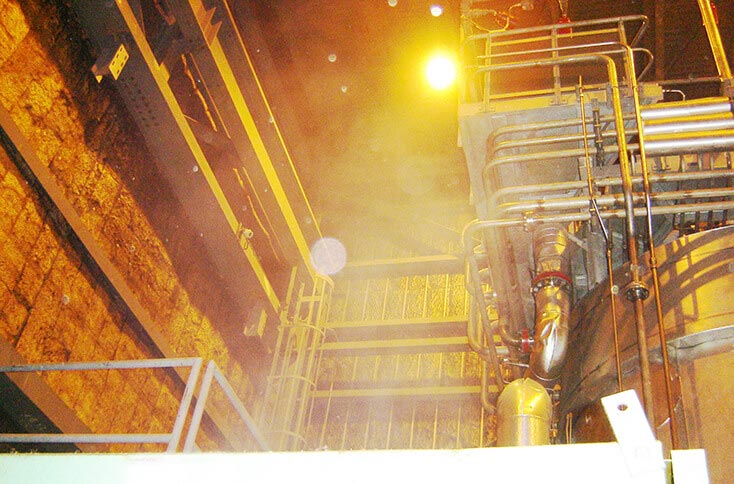
Oil mist discharge into a power plant creating potential slip hazards
System Failure Indication
If a filter element is neglected and reaches its maximum pressure differential rating, it could collapse. A collapsed filter will allow bypass and the equipment could ingest harmful contaminants which damage the internals. A nightmare scenario!! Something has gone wrong, but could it have been avoided? What to do with the staff who are now standing around with nothing to do?
This is the ultimate indicator that it is time for a replacement filter element…and maybe time for a costly rebuild or new piece of equipment as well.
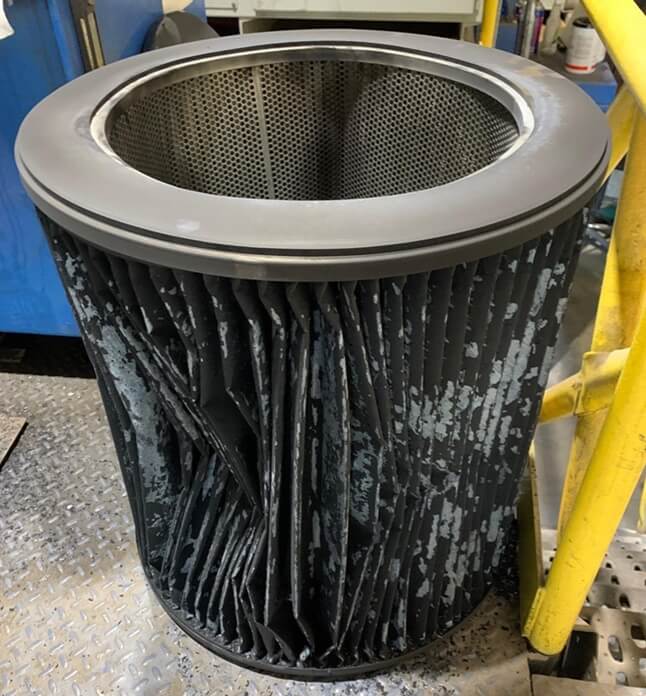
Particulate filter collapsed after exceeding maximum differential pressure rating
Make Filtration Maintenance Happen!
Regardless of the indicators used to determine when to change your filter, regularly servicing the filter is essential to maintaining a safe and productive work environment. The goal is to be proactive and schedule your filter maintenance around peak production and operation times before your equipment schedules it for you.
Let us help you come up with a filter system that streamlines maintenance, minimizes process interruptions, and protects your equipment and environment from harmful contaminants.
Enlist the experts when you need assistance!
Solberg Filtration is a leading manufacturer in vacuum filters, filter silencers, separators, and oil mist eliminators for compressors, blowers, vacuum pumps and power generation. Feel free to contact us regarding your filter sizing concerns as well as any other technical inquiries.
Learn more about our large variety of replacement filter elements, industrial filtration products, and customer case studies by visiting our website at www.solbergmfg.com